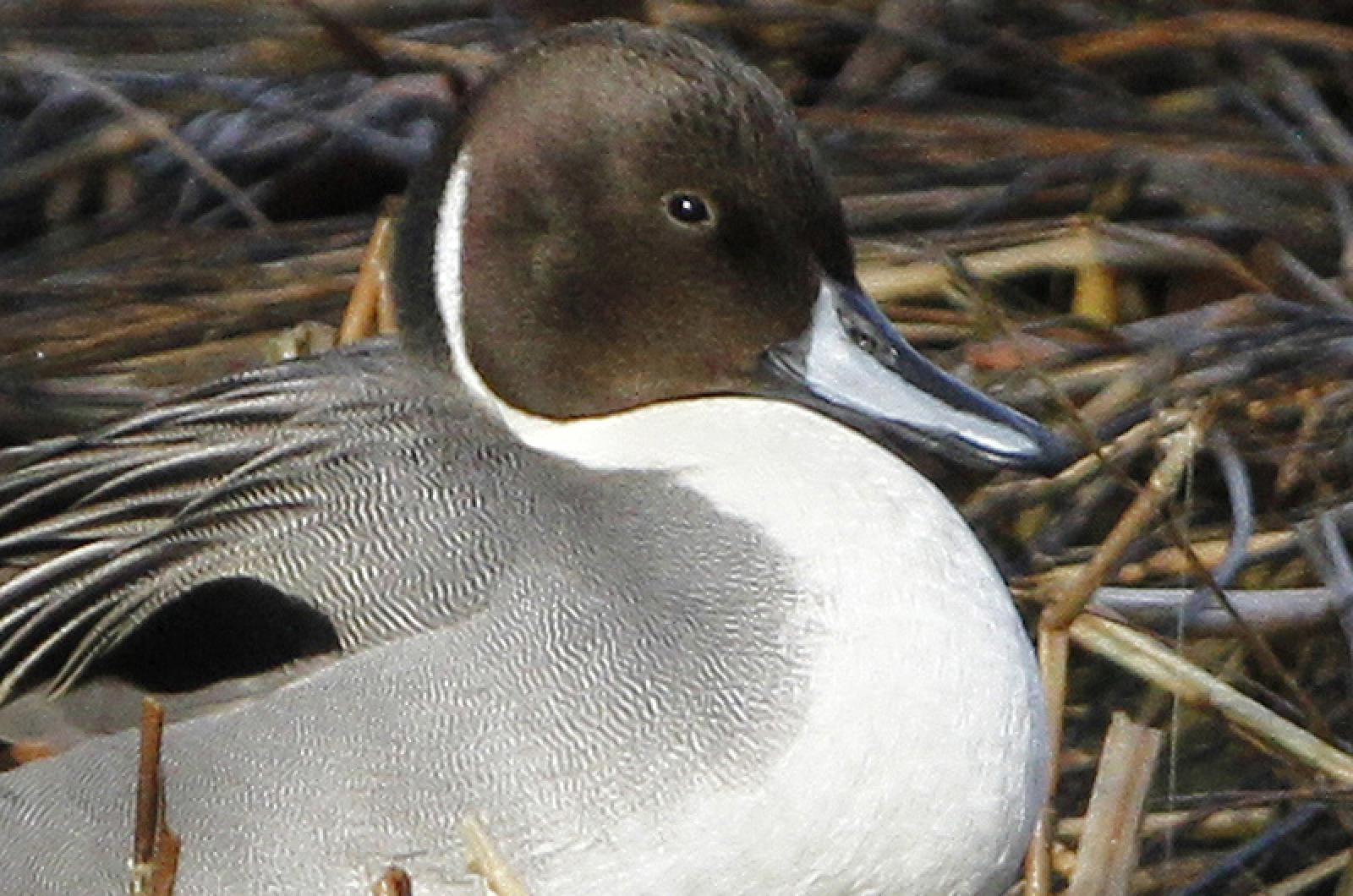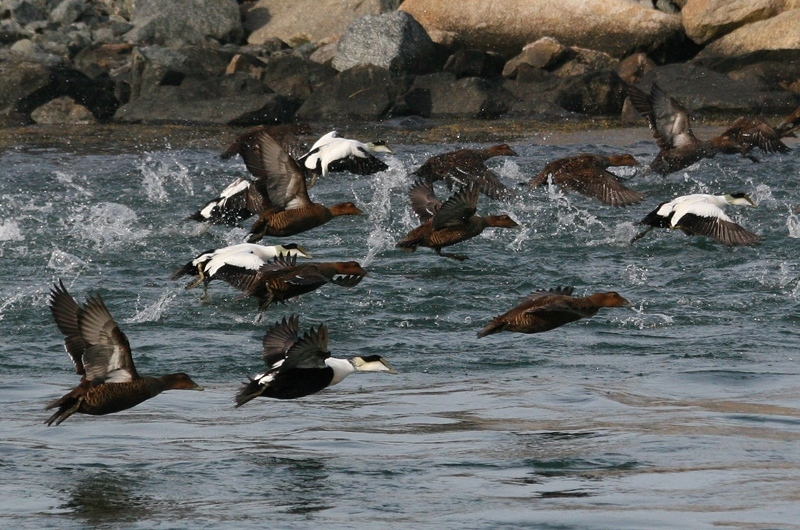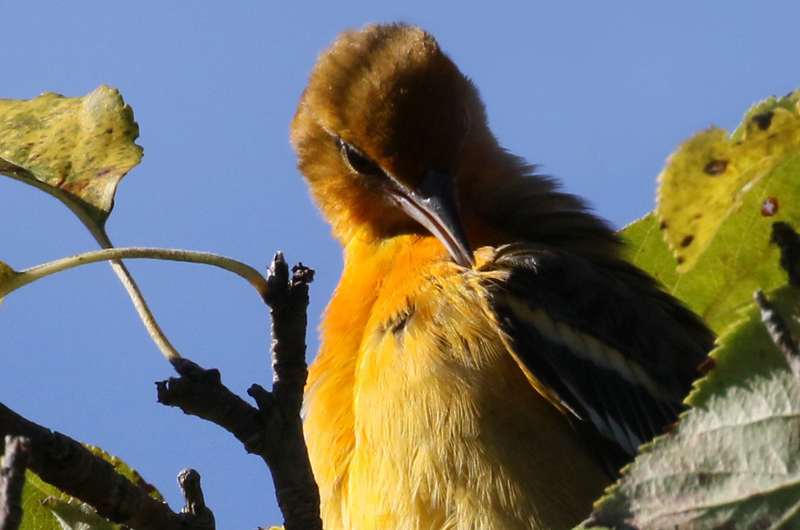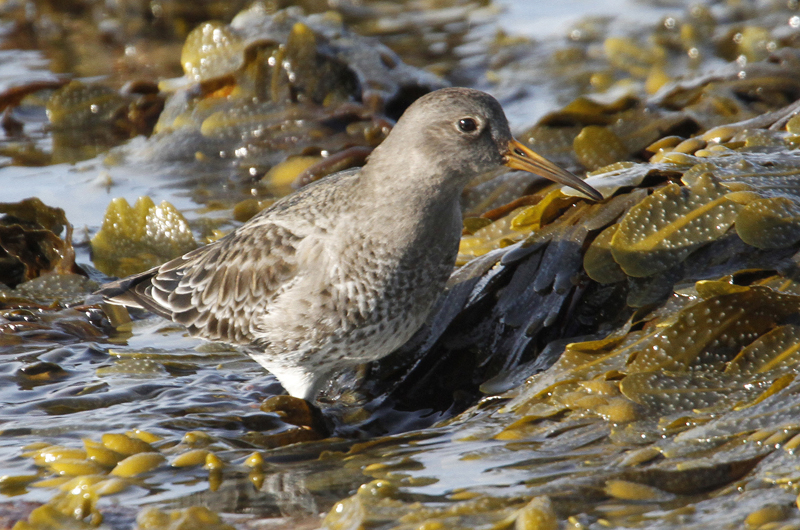Friday is the annual Christmas Bird Count, and lots of us will be out and about, looking for and counting all the birds we can find.
As this was written on Monday, we do not know what the weather will bring. For me, the worst weather is when it is around freezing with a strong northwest wind — it is just impossible to be comfortable outside as the wind chill is virtually impossible to avoid.
Strong winds can also make it difficult to count birds. We know that their metabolism is high enough that they have to eat every day, but that does not mean that birds have to leave the relative comfort of protecting trees and dense thickets. When they stay in these more protected microclimates — and birds know where these protected areas are within their winter territory — it is much harder for us to find them.
Strong winds produce larger waves, which can make waterfowl harder to count.
Larger waves have deeper troughs, which may conceal the birds from our prying eyes because the birds are only visible when they are swimming at the crest of a wave. Cliffs (for example Squibnocket or Aquinnah) can be advantageous viewpoints compared to beaches as the higher elevation means that the birds between waves are more visible.
And of course many species — especially loons, grebes, and ducks, dive underwater to find their food. Part of the flock will be underwater, and I may have already counted those birds that just returned to the surface.
Oddly enough, the really warm winter days are some of the most difficult birding weather. Those are the days of thick fog, especially at lower elevations and near the water. It is really hard to find birds when the fog is so thick that we can barely see the other birders in our flock.
But we will persevere; the weather will not stop us from counting birds. Smile and wave to us as you pass by a group of binocular-clad people barreling through woodlands, thickets and wherever else we end up.
Bird Sightings
The bird of the week is Lanny McDowell’s sighting of what appears to be a northern goshawk — a species seldom observed here. He saw the bird on Dec. 23, as it was flying away from him, across Vineyard Haven outer harbor from East Chop to West Chop. His detailed observations are convincing, but his photographs are not good enough to confirm the hawk’s identity. So please keep your eyes out for a very large barrel-shaped accipiter, and recognize that we will need a good photograph to confirm its identity.
Cookie Perry found an American oystercatcher on the beaches of Chappaquiddick on Dec. 26. These beaches have hosted a few other interesting birds as well. Rick Dwyer observed a skittish snowy owl on Leland Beach (between Dyke Bridge and Wasque Reservation) on Dec. 24, an otter in a small pond on the northern part of Cape Pogue, and a peregrine falcon on Norton Point Beach.
Susan Whiting observed two pine warblers at her feeder on Dec. 26.
There are two reports of pintails. Lanny spotted two of them mixed in with mallards and black ducks near Sarson’s Island on Dec. 25. And Peter Huntington observed one in Look’s Pond on Dec. 24.
Cheska Zayda found a lone tree swallow flying around Chilmark Pond on Dec. 25.
Sarah Mayhew found a flock of purple sandpipers on the jetties at Menemsha on Dec. 23. These dark sandpipers are almost always found on rocks — whether the rocks are part of an engineered shoreline or glacial erratics that are large enough to stick above the ocean from Lucy Vincent to Squibnocket to Aquinnah. They feed on the small critters that live on the rocks. Ms. Mayhew also observed five gadwall along with the mallards in Look’s Pond on Dec. 24.
Gus Ben David reports that the flock of winter resident fish crows flew over his house on Dec. 22. He estimates that there were 800 to 1,000 members of the flock, which was heading northwest from downtown Edgartown or Chappaquiddick. I counted an additional 300 fish crows in downtown Vineyard Haven as well as 120 commuter fish crows and 320 commuter American crows as they arrived at Lake Tashmoo on Dec. 25 and East Chop on Dec. 26. That is a lot of crows, all in addition to our year-round resident American crows. Where do more than 1,000 fish crows spend their days? Warren Woessner and Margaret Curtin both report that some of them have been hanging out near the Square Rigger Restaurant for a few weeks.
Winter residents are still arriving and rarities are always possible. Please look for them and report your sightings to birds@mvgazette.com.
Robert Culbert leads guided birding tours and is an ecological consultant living in Vineyard Haven.










Comments
Comment policy »